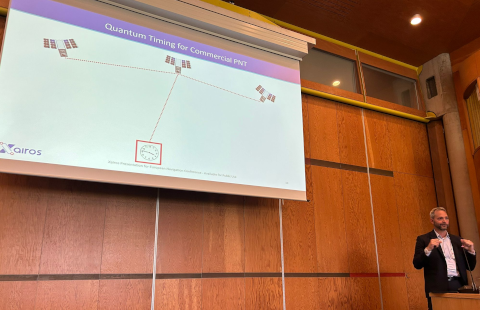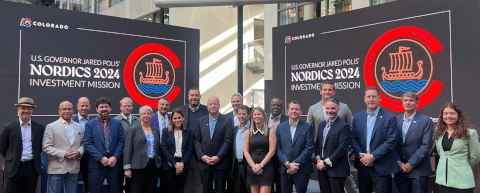
The Hierarchy of Needs for the Digital World
How good is good enough?
When it comes to GPS, it depends on who is using it – and how it is being used.
For the most people who use it only to get around, it works fine. This feeds the perception it is good enough.
But for the military and civil aviation, it most definitely is not good enough; check out the news section below. These groups are working hard to develop a “GPS independent” positioning system using sensitive sensors, AI-enabled cameras, and even muons.
But that is not where the real value in GPS lies. Humans care about location – our electronics do not. They care about time.
If there's a Maslow's Hierarchy of Needs for the digital world, timing would be at the base layer, like oxygen is for humans. An accurate and reliable timing reference provides the alignment for coordinated signal processing, buffer read/write, and time-stamping of digital events. Think of it like synchronized lights on a busy road - without it digital traffic grinds to a halt.
To keep our electronics humming smoothly lies a complex timing infrastructure consisting of stable clocks that are synchronized (see below).
But at the headwaters of this timing network is GPS, one reference clock to rule them all.
Without GPS, our networks would grind to a halt: credit cards and ATMS would stop working, communications would degrade and fail, and ultimately power grids would cease to function. We would be sitting in the dark waiting for Mad Max to take over.
Fortunately, there are alternatives in development to take the bullseye off GPS.
Last Week's Theme: Coordinated Lunar Time (LTC)
Where's my newsletter? It has been a while because it has been an extremely busy month:
- Selected for four new contracts, with another three more in development. Major announcements coming soon!
- Completed a Preliminary Design Review (PDR) for one of these projects.
- Setting up at two new office locations.
- Presented "Quantum Time Transfer for Accurate and Resilient PNT" at the European Navigation Conference.

- Joined Colorado Governor Polis on the 2024 Nordic Investment Mission.

- New partnerships with leading quantum and timing and sync companies.
- Presented at the Rocky Mountain Photonics Summit & Expo.
- Attended the Workshop on Synchronization and Timing Systems.
- Expanded the team.
- Advanced the development of critical elements and new IP with a focus on a practical Alternative PNT system.
Lots of updates to share in coming weeks!
- The impact of Russia's jamming of GPS was laid out in a report obtained by the Washington Post, that noted that "U.S.-made satellite-guided munitions in Ukraine have failed to withstand Russian jamming technology, prompting Kyiv to stop using certain types of Western-provided armaments after effectiveness rates plummeted."
- Widespread jamming of GPS in Ukraine and Middle East is also causing chaos for civilian users, including "Ships that appear to be sailing through landlocked airports. Dating apps that match Israelis with Lebanese, assuming they are in one place. Tourist flights forced to turn around — mid-air — after sudden navigation troubles."
- The recent solar activity made for impressive northern lights, but also resulted in a GPS outage on May 10.
- There also seems to be a rash of reported GPS outages by transatlantic flights.
- With the growth of AI, there is growing concern about their insatiable need for both data and power, and that "tech firms are seeking a miracle solution." One possible solution: better synchronization within data centers.
- We have said it before, but the experts agree: the Moon needs its own time because the "seconds really do pass more quickly up there" and "more precise maps of the lunar surface."
- Denver-Boulder area stakes a claim in space with a burgeoning aerospace industry, noting that “191 aerospace businesses are supporting 29,000 jobs in the region” according to a Colorado Space Coalition report.
- SPIE Optics + Photonics 2024, August 18 - 22, San Diego, California
- Navy Gold Coast, August 19 - 21, San Diego, California
- Quantum World Congress 2024, September 9 - 11, Tysons, Virginia
- World Space Business Week, September 16 - 20, Paris, France
- ISPCS 2024, October 7 - 11, Tokyo, Japan
- 2024 OCP Global Summit, October 15–17, San Jose, California
- International Timing and Sync Forum 2024, November 4 - 7, Seville, Spain
At the heart of the timing infrastructure that keeps our networks ticking is time transfer technology. Time transfer works like the description suggests – to transfer time from a reference clock to a “bad” clock.
At its simplest, shopkeepers of old would set their watch to the clock in the town square – essentially “transferring” the time from a clock that was carefully calibrated to celestial events.
But here’s the challenge: synchronizing two clocks that are close is easy. Synchronizing clocks that are far apart is hard. And, while building a global time distribution system is challenging, it has historically been tied to incredible advancements.
Indeed, there are some that claim that the rise of the British Empire was enabled by the development of a marine chronometer that could be synchronized to a vast network of observatories in ports around the globe. This was the world's first global timing network and is why our global time standard is set to the local time in Greenwich, England.
But it was the advent of GPS that has truly shaped our modern world, with a GPS receiver for every person in the world and generating “the largest venture outcomes in history.”
GPS, and other timing distribution systems, utilize electrical signals over existing networks with two basic varieties: one-way and two-way time transfer.
One way time transfer sends a signal and information that indicates the time of the sender. Because the signal takes some time to reach the receiver, there needs to be additional information to estimate this delay.
Two way time transfer does the same thing, but in both directions: both clocks transfer their time to the other. While this design is more complicated, distance as a variable cancels out.
GPS, and other global navigation satellite systems (GNSS), use one-way RF time transfer. This protocol estimates the travel time between the satellite and the receiver, but with the accuracy degraded by atmospheric variations. Solar activity plays a major role in this, which is why GPS accuracy was so bad recently.
But now there is a new option: quantum time transfer using entangled photons.

